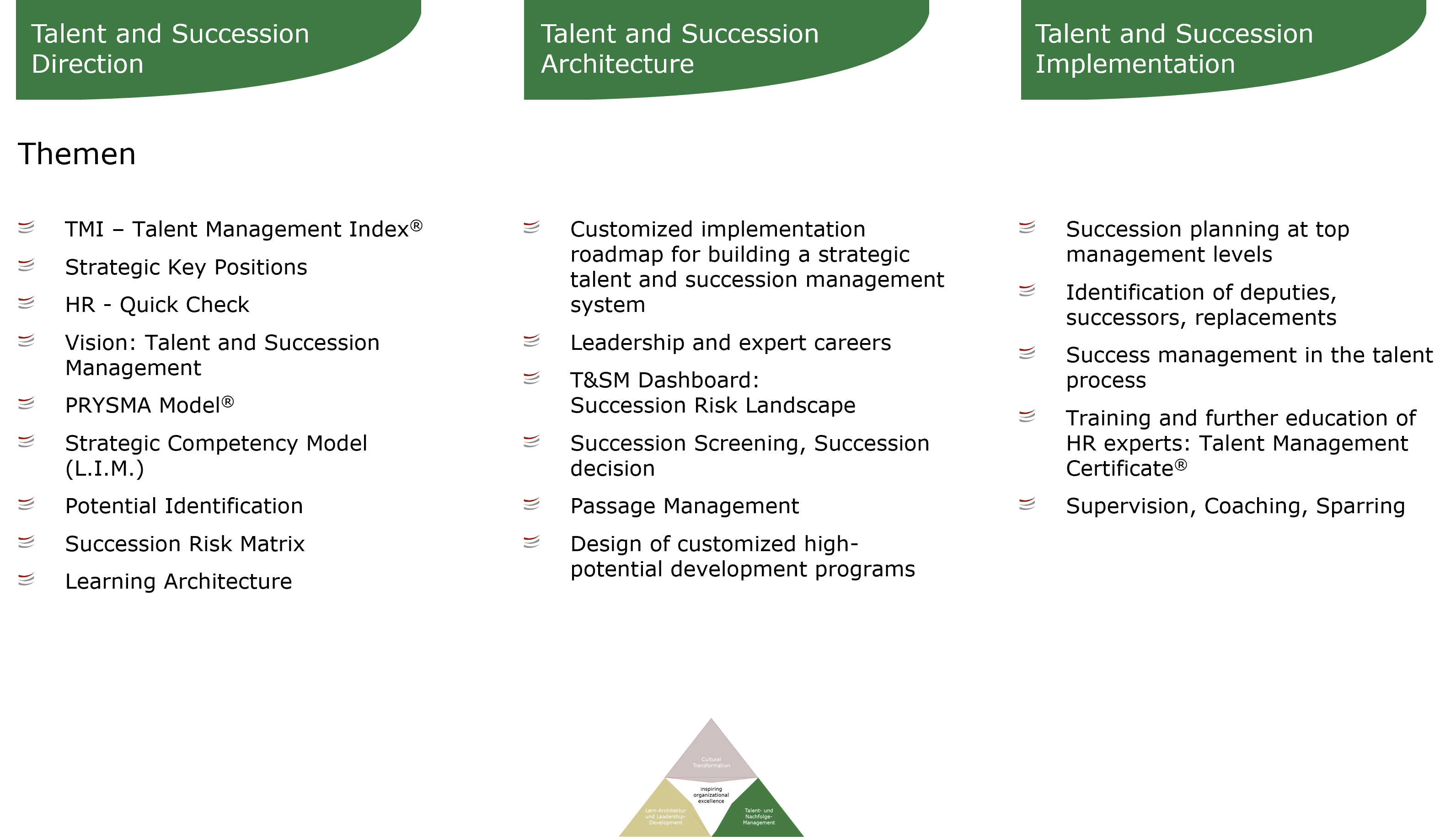Talent- and Succession Management as an Overall System
Securing the future viability of organisations sustainably with Talent Management!
In the past years we have developed to one of the most experienced specialists in the field of Talent Management.
The Talent Management Index® developed by us is an innovative instrument, with which one can differentiate strategic Talent Management from classic Employee Development. It is the basis for the most up-to-date and probably also the most extensive Talent Management Study in German speaking countries: About 300 organisations (approx. 80% of the Dax30, ATX or SMI enterprises) have put their Talent Management to our test.
Our consulting experience from the past 20 years and the knowledge which we have gained from our contemporary study have been consolidated in more than 100 projects since 2010. This gives us the necessary confidence when using conceptual approaches and instruments in Talent Management. We can assess what is helpful, pragmatic, and realistic. We are particularly aware of the obstacles and risks during the implementation.
Our Consulting Spectrum in the Field of Talent & Succession Management
